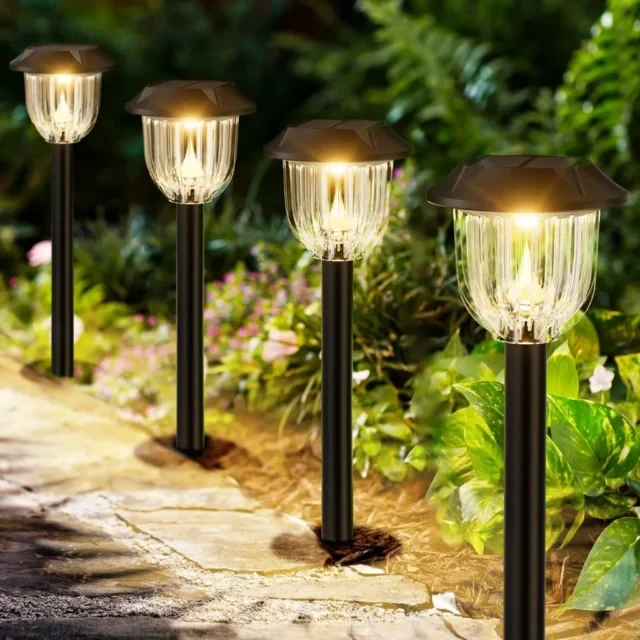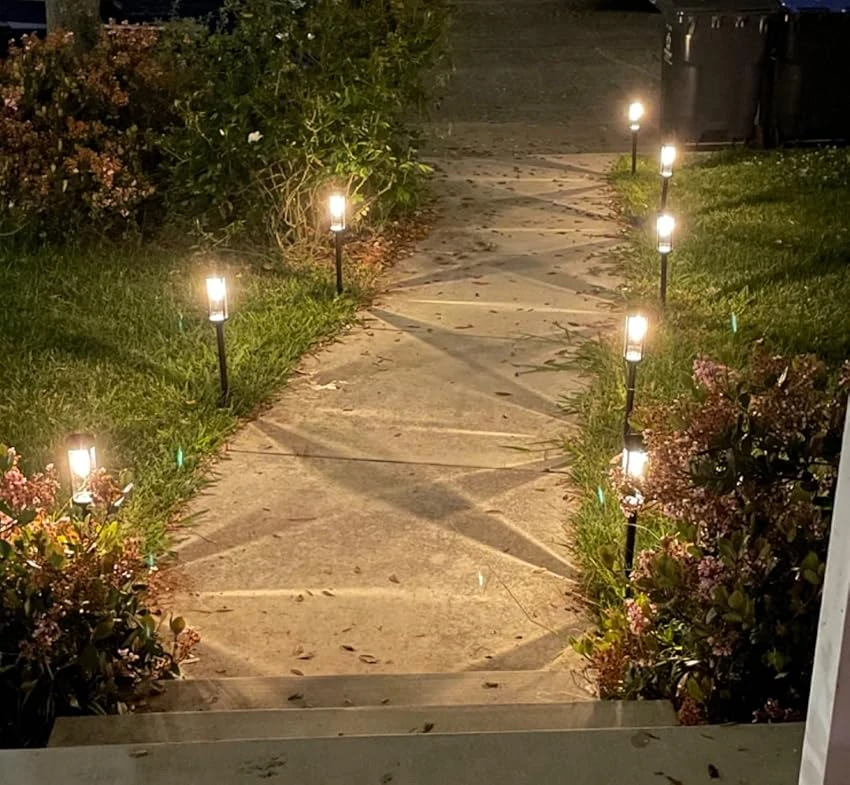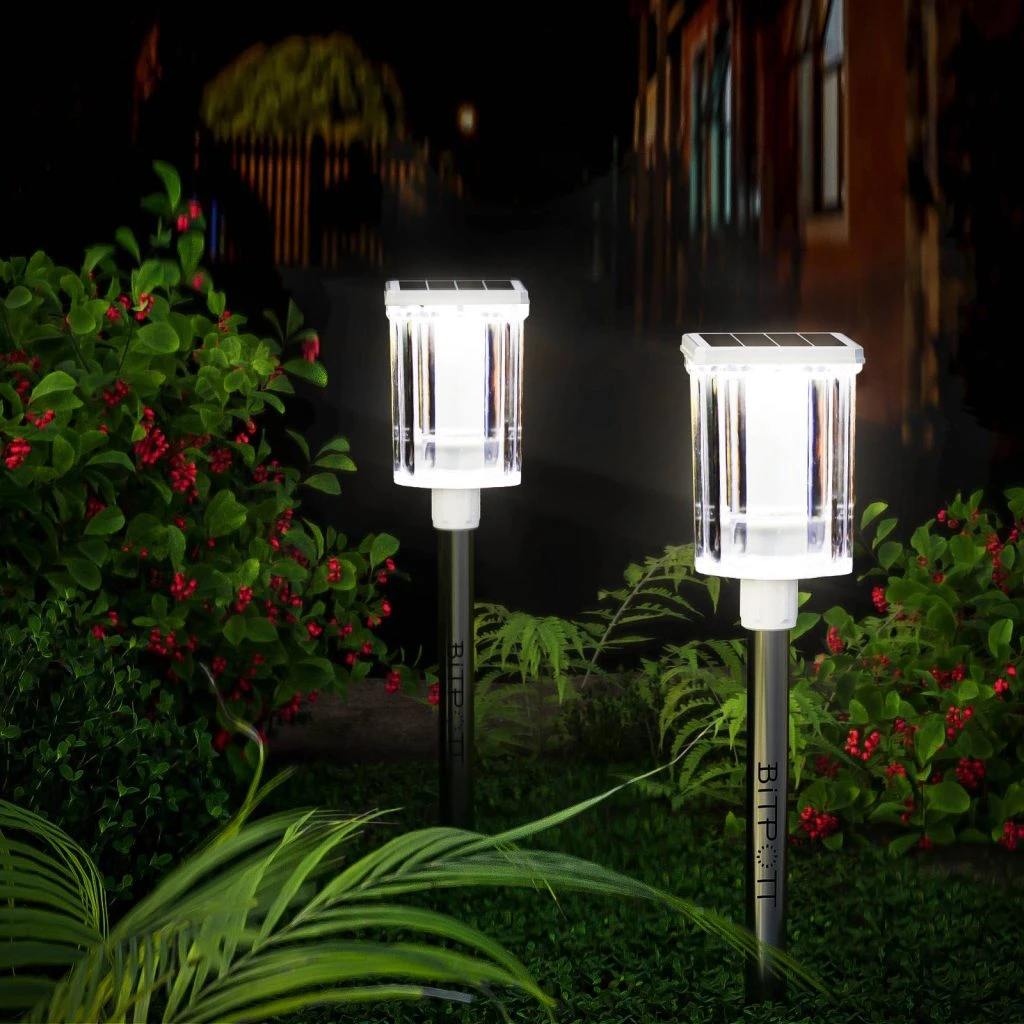In the ever-evolving world of smart home technology, integrating solar security lights with home security systems has become a game-changer for American homeowners. Combining eco-friendly solar-powered lighting with advanced smart home security offers a sustainable, efficient, and powerful way to enhance outdoor safety. This article explores how solar lights can seamlessly integrate with smart home systems to provide robust home security solutions, tailored to the needs of tech-savvy homeowners in the USA. From motion-activated lighting that triggers cameras to remote monitoring via mobile apps, we’ll dive into practical applications, compatible models, and step-by-step tutorials for setting up smart security systems.

Why Integrate Solar Lights with Smart Home Security?
The demand for smart home security has surged in recent years, with homeowners seeking innovative ways to protect their properties while embracing sustainability. Solar security lights offer a compelling solution by harnessing renewable energy, reducing electricity costs, and providing reliable illumination without the need for complex wiring. When paired with smart home systems, these lights transform from simple outdoor fixtures into integral components of a comprehensive home security strategy.
Benefits of Solar-Powered Smart Security Lighting
- Energy Efficiency: Solar lights use sunlight to power high-efficiency LEDs, eliminating reliance on grid electricity and lowering energy bills.
- Eco-Friendly: By leveraging renewable energy, solar-powered lighting reduces your carbon footprint, aligning with environmentally conscious living.
- Easy Installation: With no wiring required, solar security lights can be installed in minutes, making them ideal for DIY enthusiasts.
- Enhanced Security: Motion-activated lighting deters potential intruders by illuminating dark areas and triggering alerts.
- Smart Integration: Compatibility with platforms like Amazon Alexa, Google Home, and Ring allows seamless control and automation.
Key Features of Solar Lights in Smart Home Security
Integrating solar security lights with smart home systems unlocks a range of features that elevate outdoor safety. Below, we explore three standout functionalities that make these lights indispensable for tech-savvy homeowners.
Light-Triggered Cameras: Seamless Surveillance Integration
One of the most powerful features of solar-powered security lights is their ability to work in tandem with smart security cameras. When a motion sensor detects movement, the solar light activates, illuminating the area and simultaneously triggering connected cameras to begin recording. This ensures that any activity in your yard is captured in high-definition, often with 2K resolution or higher, and stored securely in the cloud or locally.
For example, brands like Eufy and Arlo offer cameras with integrated or compatible solar panels, eliminating the need for frequent battery recharges. The Eufy S120 2K Solar Wall Light Outdoor Security Camera combines a solar-powered light with a camera, offering cloud storage and local storage options via an 8GB built-in memory. Similarly, Arlo’s Essential 2nd-gen camera pairs with a compact solar panel for continuous power and features 2K resolution, color night vision, and two-way audio.
This integration ensures that every motion-triggered event is recorded, providing homeowners with peace of mind and valuable evidence in case of an incident.
Remote Alerts: Stay Informed Anywhere, Anytime
With smart home security integration, solar security lights can send real-time alerts to your smartphone via a dedicated app. If a light is triggered unexpectedly—such as prolonged illumination at night, which could indicate an intruder—you receive an immediate notification. This remote monitoring capability allows you to check live footage, communicate via two-way audio, or even activate additional deterrents like sirens or floodlights.
For instance, Ring’s Stick Up Cam Pro integrates with solar panels and supports remote alerts through the Ring app. Its Bird’s Eye View feature tracks movement across large areas, making it ideal for expansive yards. The Tapo C425 KIT 2K Solar Powered Outdoor Security Camera also offers remote monitoring with a 360-degree pan/tilt solar panel, requiring only 30 minutes of sunlight daily to stay powered.
These smart home systems ensure you’re always connected to your home’s security, whether you’re at work or on vacation.
Simulated Presence: Deter Intruders with Randomized Lighting
A key strategy for home security is making your home appear occupied even when you’re away. Solar security lights with smart home integration can be programmed to turn on and off randomly, mimicking the behavior of someone at home. Studies suggest that this simulated presence can reduce the likelihood of break-ins by up to 60%, as potential intruders are less likely to target a home that appears occupied.
Smart lighting systems like Philips Hue and Ring Solar Pathlight allow you to schedule randomized lighting patterns through their respective apps. By integrating with Amazon Alexa or Google Home, you can also control these lights via voice commands or automate them to sync with other devices, such as smart locks or indoor lights, for a cohesive smart home security setup.
Mainstream Solar Lights Compatible with Smart Security Systems
To help you choose the right solar security lights for your smart home, we’ve compiled a list of top models compatible with mainstream smart home systems like Amazon Alexa, Google Home, and Ring. These models are vetted for their performance, durability, and integration capabilities.
Recommended Solar Security Light Models
- Arlo Essential 2nd-Gen Camera with Solar Panel
- Features: 2K resolution, color night vision, two-way audio, integrated spotlight, compatible with Alexa and Google Home.
- Why Choose It: Affordable, durable, and pairs seamlessly with Arlo’s compact solar panel for continuous power.
- Eufy S120 2K Solar Wall Light Outdoor Security Camera
- Features: Integrated solar panel, 8GB local storage, AI detection, supports Alexa and Google Home.
- Why Choose It: No subscription required for AI features, ideal for budget-conscious homeowners.
- Ring Stick Up Cam Pro with Solar Panel
- Features: Extra-large resolution, Bird’s Eye View, color night vision, Ring app integration.
- Why Choose It: Perfect for large yards, with robust smart home integration via Alexa.
- Tapo C425 KIT 2K Solar Powered Outdoor Security Camera
- Features: 360-degree pan/tilt solar panel, 2K QHD resolution, AI detection, local and cloud storage options.
- Why Choose It: Minimal sunlight requirement (30 minutes daily) and flexible installation.
- HMcity 120 LED Solar Lights
- Features: 270-degree illumination, three lighting modes, motion sensor, IP65 weatherproof.
- Why Choose It: Budget-friendly, easy to install, and ideal for basic motion-activated lighting.
These models are designed to withstand harsh weather, with IP65 weatherproof ratings ensuring durability in rain, snow, or extreme temperatures. Always ensure the solar panel is placed in direct sunlight for optimal performance.
Smart Security Scene Setup Tutorial
Setting up a smart home security system with solar security lights is straightforward, even for beginners. Follow this step-by-step tutorial to create a robust outdoor safety solution that integrates lighting, cameras, and remote monitoring.

Step 1: Choose and Install Your Solar Security Lights
- Select a Compatible Model: Choose a solar security light or camera from the list above, ensuring compatibility with your smart home system (e.g., Alexa, Google Home, or Ring).
- Position the Solar Panel: Mount the solar panel in a location with direct sunlight for at least 4–6 hours daily. Avoid shaded areas or overhangs.
- Install the Light/Camera: Use the included brackets and screws to mount the light or camera on a wall, fence, or pole. Ensure the motion sensor has a clear line of sight.
- Test the Setup: Allow the solar panel to charge for a full day, then test the light or camera to confirm it activates upon motion.
Step 2: Connect to Your Smart Home System
- Download the App: Install the manufacturer’s app (e.g., Arlo, Ring, Eufy, or Tapo) on your smartphone.
- Pair the Device: Follow the app’s instructions to connect the solar security light or camera to your Wi-Fi network. For some devices, a hub (e.g., Ring Alarm Pro) may be required.
- Integrate with Smart Home Platforms: In the app, link the device to Alexa, Google Home, or other platforms. For example, say, “Alexa, discover my devices,” to add the light or camera to your smart home system.
Step 3: Configure Smart Security Scenes
- Motion-Triggered Recording:
- In the app, enable motion-activated lighting and link it to a camera. Set the camera to record when the light is triggered.
- Adjust the motion sensor sensitivity to avoid false triggers (e.g., from pets or passing cars).
- Remote Alerts:
- Enable push notifications in the app to receive remote alerts when the light or camera detects motion.
- Set up custom alerts for prolonged illumination, which could indicate suspicious activity.
- Simulated Presence:
- Use the app’s scheduling feature to set randomized on/off patterns for your solar security lights.
- For example, program the lights to turn on at dusk for 30 minutes, off for an hour, then on again randomly throughout the night.
- Test Your Setup: Walk through your yard at night to ensure the motion sensors trigger the lights and cameras as expected. Check the app for live footage and alerts.
Step 4: Optimize and Maintain
- Check Solar Panel Efficiency: Clean the solar panel monthly to remove dust or debris that could reduce charging efficiency.
- Monitor Battery Levels: Most apps display battery status. If the light or camera dims, ensure the solar panel receives adequate sunlight.
- Update Firmware: Regularly check for firmware updates in the app to maintain compatibility and security.
Tips for Maximizing Outdoor Safety
To get the most out of your solar security lights and smart home security system, consider these additional tips:
- Strategic Placement: Install lights and cameras above doors, driveways, and pathways to cover key entry points.
- Combine with Other Devices: Pair solar lights with smart locks or indoor lights for a comprehensive home security solution.
- Weather Considerations: Choose IP65-rated devices to ensure durability in harsh weather. For winter, select models with high-capacity batteries (e.g., WUUK Wireless Cam Pro with 9600mAh).
- Regular Testing: Periodically test your motion sensors and remote alerts to ensure they function correctly.
Conclusion
Integrating solar security lights with smart home systems offers American homeowners a powerful, eco-friendly, and user-friendly way to enhance outdoor safety. By combining motion-activated lighting, light-triggered cameras, remote monitoring, and simulated presence, these systems provide robust protection against intruders while reducing energy costs. With easy-to-install models like the Arlo Essential, Eufy S120, and Ring Stick Up Cam Pro, and a straightforward setup process, tech-savvy homeowners can create a seamless smart home security ecosystem. Start today by choosing a compatible solar-powered lighting solution and following our tutorial to safeguard your home with cutting-edge technology.


Leave a Reply